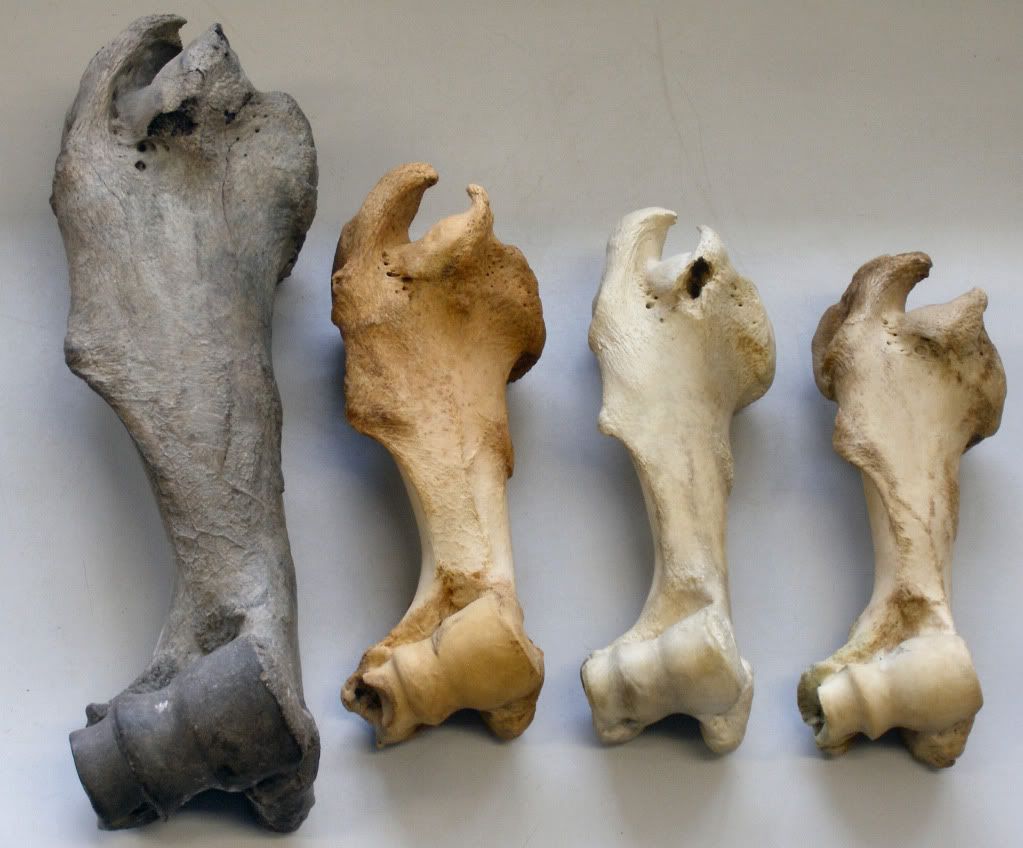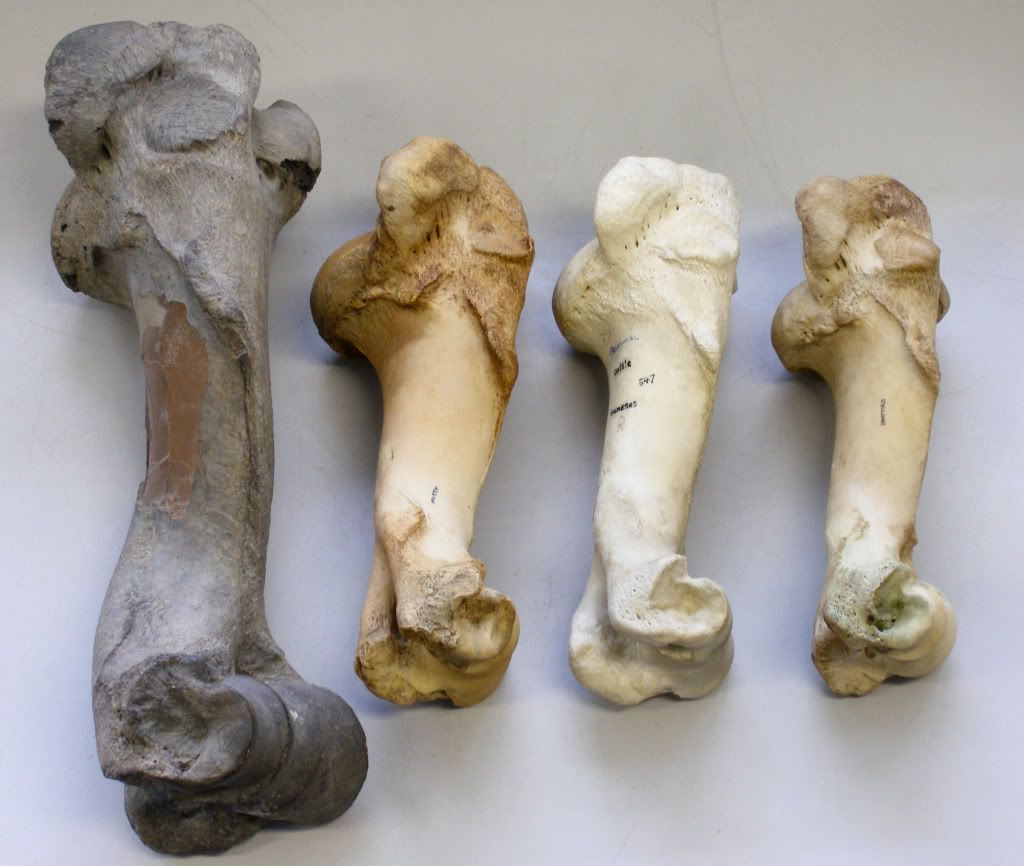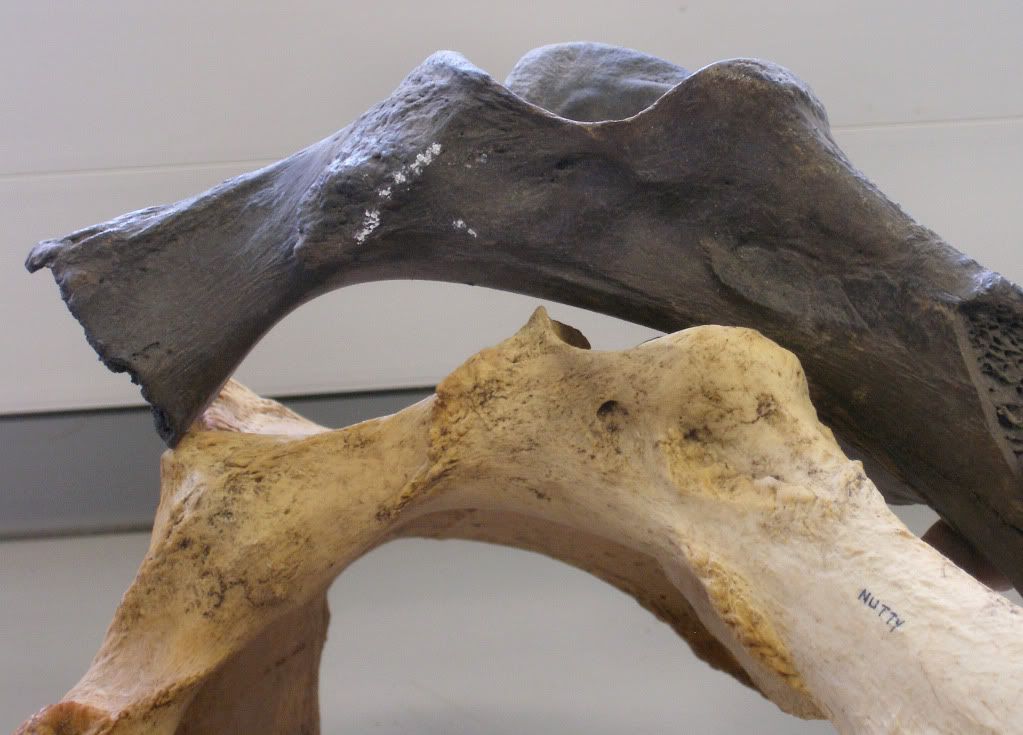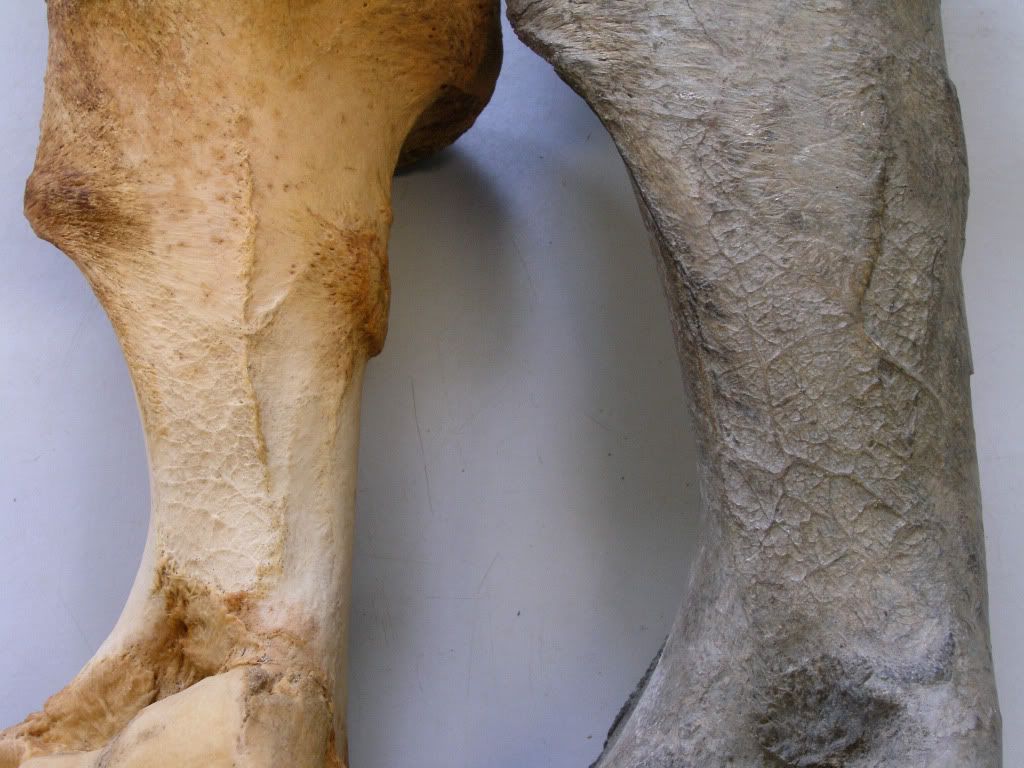The origin of dexter cattle - Where can I learn more about it?
I have of course read a number of texts about the history and origin of the Dexters since I became interested in them tree years ago. Most of them have been pretty short and summary. Today I made a quick googling to refresh my memory, but didn´t find some of the texts I read before. If anyone could recommend some good texts to read, or point out some directions I would be grateful.
A Swedish text about dexters I found online says that dexters are "considered beeing an Irish breed but its origin is Nordic and it arrived to Ireland with the Vikings. The closest similar breed is the Norweigan breed Vestlandsk fjordfe." (My amateur translation of a text by Skärgårdarnas riksförbund-National Association of Archipelago.) Is this true? If so, proven by genetic tests or just a theory?
P.S. Anyone interested in the Vestlandsk fjordfe, a really nice cow that would be my second choice if I could not have Dexters, can find pictures here: http://fjordfe.no/bilete/
A Swedish text about dexters I found online says that dexters are "considered beeing an Irish breed but its origin is Nordic and it arrived to Ireland with the Vikings. The closest similar breed is the Norweigan breed Vestlandsk fjordfe." (My amateur translation of a text by Skärgårdarnas riksförbund-National Association of Archipelago.) Is this true? If so, proven by genetic tests or just a theory?
P.S. Anyone interested in the Vestlandsk fjordfe, a really nice cow that would be my second choice if I could not have Dexters, can find pictures here: http://fjordfe.no/bilete/
Anna Bergstrom
Sweden
Sweden
-
Louisa Gidney
- Posts: 852
- Joined: Mon Sep 05, 2005 11:00 am
- Contact:
If you look on the "Links" on the left of this page, www.dex-info.net is a good place to start
Zanfara Dexters
Tow Law
Co. Durham
Tow Law
Co. Durham
Thanks Louisa, that was actually the articles I was looking for but couldn´t find.
I have done a quick reading through a few of the articles and find that the theory about the origin differ. From one I get the impression that Kerry and Dexter are very much of the same origin, derived from the very old Celtic cattle that where tamed by man thousands of years ago. Another article says "A larger study by Blott et al. (1997) showed that the Dexter was most closely related to the Aberdeen Angus (see Table 2 below). Again the relationship to Celtic breeds such as the White Park and Highland was remote, with the Kerry being even more distant."
I am not after starting a quarrel or something about these issues, net quarrels are often very depressing I think, but I am really curious about what you think is right. And is the theory about Nordic origin just a self reproducing myth in here Scandinavia? That would not surprise me. I don´t think the Dexter and the Fjordfe seem obviously connected.
Edited By Anna on 1245176662
I have done a quick reading through a few of the articles and find that the theory about the origin differ. From one I get the impression that Kerry and Dexter are very much of the same origin, derived from the very old Celtic cattle that where tamed by man thousands of years ago. Another article says "A larger study by Blott et al. (1997) showed that the Dexter was most closely related to the Aberdeen Angus (see Table 2 below). Again the relationship to Celtic breeds such as the White Park and Highland was remote, with the Kerry being even more distant."
I am not after starting a quarrel or something about these issues, net quarrels are often very depressing I think, but I am really curious about what you think is right. And is the theory about Nordic origin just a self reproducing myth in here Scandinavia? That would not surprise me. I don´t think the Dexter and the Fjordfe seem obviously connected.
Edited By Anna on 1245176662
Anna Bergstrom
Sweden
Sweden
- Broomcroft
- Posts: 3005
- Joined: Wed Sep 06, 2006 4:42 am
- Location: Shropshire, England
- Contact:
-
Louisa Gidney
- Posts: 852
- Joined: Mon Sep 05, 2005 11:00 am
- Contact:
Interesting questions. All breeds on the western side of Britain are popularly believed to have some Viking ancestry. I know RBST published some work years ago showing some genetic relationship between Scandinavian sheep and Manx Loaghtans. On the other hand, an Irish colleague is looking at pre-Viking Celtic Christian 4 horn sheep in Ireland and there is a possibility that these were being spread around with the establishment of the Celtic church in northern Britain.
As to the Dexters, I've been comparing the bones of two Dexter bulls with a Chillingham bull and an aurochs bull. Despite the size difference, some aspects of morphology are much more like the aurochs. Despite very similar size of the live animals, the non short Dexter bones are mostly different to those of the Chillingham. If any who has got the knack of posting photos here would put them up, I'll happily email them and then describe the salient points when everyone can see what I'm talking about.
Incidentally, the Chillinghams are, not surprisingly, a good match for the local archaeological bones whereas the Dexters are not at the moment. Have yet to go through the cow skeletons in detail.
As to the Dexters, I've been comparing the bones of two Dexter bulls with a Chillingham bull and an aurochs bull. Despite the size difference, some aspects of morphology are much more like the aurochs. Despite very similar size of the live animals, the non short Dexter bones are mostly different to those of the Chillingham. If any who has got the knack of posting photos here would put them up, I'll happily email them and then describe the salient points when everyone can see what I'm talking about.
Incidentally, the Chillinghams are, not surprisingly, a good match for the local archaeological bones whereas the Dexters are not at the moment. Have yet to go through the cow skeletons in detail.
Zanfara Dexters
Tow Law
Co. Durham
Tow Law
Co. Durham
These pics have been posted for Louisa and are her pics.
She will explain asap!!!
Stephanie
Aurochs 005

Aurochs 010

Aurochs 012

Aurochs 013

Aurochs 031

Aurochs 035

Edited By Saffy on 1245245764
She will explain asap!!!
Stephanie
Aurochs 005

Aurochs 010

Aurochs 012

Aurochs 013

Aurochs 031

Aurochs 035

Edited By Saffy on 1245245764
Stephanie Powell
Duffryn Dexters 32824
Abergavenny
https://www.facebook.com/Duffryn-Dexter ... 609196773/
Duffryn Dexters 32824
Abergavenny
https://www.facebook.com/Duffryn-Dexter ... 609196773/
-
Louisa Gidney
- Posts: 852
- Joined: Mon Sep 05, 2005 11:00 am
- Contact:
Many thanks to Saffy for posting the photos for me. The big, dark bones are the aurochs bull.
005 is the scapula or shoulder blade. Aurochs, Aiskew Juglans Nigra non-short c. 44" hip height, Chillingham bull c. 43", Dalmuir Cyclone c. 36". Note how heavily built Juglans Nigra is compared to the Chillingham and the whole shape of the blade is broader in the Dexters.
005 is the scapula or shoulder blade. Aurochs, Aiskew Juglans Nigra non-short c. 44" hip height, Chillingham bull c. 43", Dalmuir Cyclone c. 36". Note how heavily built Juglans Nigra is compared to the Chillingham and the whole shape of the blade is broader in the Dexters.
Zanfara Dexters
Tow Law
Co. Durham
Tow Law
Co. Durham
-
Louisa Gidney
- Posts: 852
- Joined: Mon Sep 05, 2005 11:00 am
- Contact:
010, 012, 013 are views of the humerus: aurochs, Juglans Nigra, Chillingham, Cyclone.
Minimal difference in overall length of the Dexters & Chillingham despite substantial difference in height between Cyclone & the others. Note the very pronounced modelling of all soft tissue attachments in the Dexters and the aurochs but not the Chillingham. Tooth wear and fusion indicate that the aurochs and Chillingham were about the same age as Cyclone, c. 8 years, while Juglans Nigra was 13.
Weight of humeri:
aurochs 2099g, damaged & c. 3,000 years old
Juglans Nigra 755g
Chillingham 506g
Cyclone 535g
So, the Dexters have very much more solid bones than the Chillingham but not quite in the same league as the aurochs. This can't be attributed to pasture as Chillingham park is lower ground & better grass than my holding.
031 is the pubis bone of the aurochs and Juglans Nigra. Despite the massive height of the aurochs, these bones are very similar in length, suggesting that the aurochs was little broader than the Dexter
035 is a detail of the surface of the humerus of Juglans Nigra and the aurochs. I have never seen this surface patterning on any archaeological specimen.
Nothing conclusive but it helps to demonstrate that, despite their "wild" appellation, the Chillingham's bones are more like the run of archaeological cattle bones from the region whereas the Dexter is, surprisingly, more like a miniature of the aurochs, which is the ancestor of all domestic cattle. This is only a start and I realise there are no scales on the photos. However I ran the bones of Juglans Nigra & Cyclone past colleagues who agreed that there is nothing in the morphology that immediately indicates that Cyclone was a chondrodysplasia carrier.
Minimal difference in overall length of the Dexters & Chillingham despite substantial difference in height between Cyclone & the others. Note the very pronounced modelling of all soft tissue attachments in the Dexters and the aurochs but not the Chillingham. Tooth wear and fusion indicate that the aurochs and Chillingham were about the same age as Cyclone, c. 8 years, while Juglans Nigra was 13.
Weight of humeri:
aurochs 2099g, damaged & c. 3,000 years old
Juglans Nigra 755g
Chillingham 506g
Cyclone 535g
So, the Dexters have very much more solid bones than the Chillingham but not quite in the same league as the aurochs. This can't be attributed to pasture as Chillingham park is lower ground & better grass than my holding.
031 is the pubis bone of the aurochs and Juglans Nigra. Despite the massive height of the aurochs, these bones are very similar in length, suggesting that the aurochs was little broader than the Dexter
035 is a detail of the surface of the humerus of Juglans Nigra and the aurochs. I have never seen this surface patterning on any archaeological specimen.
Nothing conclusive but it helps to demonstrate that, despite their "wild" appellation, the Chillingham's bones are more like the run of archaeological cattle bones from the region whereas the Dexter is, surprisingly, more like a miniature of the aurochs, which is the ancestor of all domestic cattle. This is only a start and I realise there are no scales on the photos. However I ran the bones of Juglans Nigra & Cyclone past colleagues who agreed that there is nothing in the morphology that immediately indicates that Cyclone was a chondrodysplasia carrier.
Zanfara Dexters
Tow Law
Co. Durham
Tow Law
Co. Durham
Can I bring this topic up again? I am trying to write a short text abut the origins of the Dexter, and again I am puzzled and confused.
What is the contemporary view on the connection between Dexters and Kerrys? What do you (I am now addressing all Dexter owners worldwide) say when you tell the story about the Dexter? Do you tend think that the Dexter is a variation of the Kerry?
And Louisa, if you have any news about your work that you would like to share I am all ears (eyes).
What is the contemporary view on the connection between Dexters and Kerrys? What do you (I am now addressing all Dexter owners worldwide) say when you tell the story about the Dexter? Do you tend think that the Dexter is a variation of the Kerry?
And Louisa, if you have any news about your work that you would like to share I am all ears (eyes).
Anna Bergstrom
Sweden
Sweden
-
acrossthesea
- Posts: 31
- Joined: Sun Oct 28, 2007 7:23 pm
- Location: Co Londonderry.N.Ireland
Hi Anna,
I remain convinced that the Dexter is in some way related to the Spanish fighting bull. I do not think that it is a coincidence that this miniture cow was found in Co Kerry years after the Spanish Armada. It is fact that some ships of the Armada went aground of the west coast of Ireland. We know that the Spanish bred down the size of cattle to provide meat etc on board the ships. It is not unreasonable to suggest that some of these animals swam to the shore when these ships went aground. These could be the same type that Mr Dexter captured at a later date. Also if you look at the Spanish fighting bull and the dexter bull ,with horns, there is a striking simularity. I believe that there is a connection.
Howard Hilton (Northern Ireland.)
I remain convinced that the Dexter is in some way related to the Spanish fighting bull. I do not think that it is a coincidence that this miniture cow was found in Co Kerry years after the Spanish Armada. It is fact that some ships of the Armada went aground of the west coast of Ireland. We know that the Spanish bred down the size of cattle to provide meat etc on board the ships. It is not unreasonable to suggest that some of these animals swam to the shore when these ships went aground. These could be the same type that Mr Dexter captured at a later date. Also if you look at the Spanish fighting bull and the dexter bull ,with horns, there is a striking simularity. I believe that there is a connection.
Howard Hilton (Northern Ireland.)
- Broomcroft
- Posts: 3005
- Joined: Wed Sep 06, 2006 4:42 am
- Location: Shropshire, England
- Contact:
You mean bulls like this one.....http://www.youtube.com/watch?v=antP6L4dbR4. Pity he didn't get his own back.
Mind you, this one did.....http://www.youtube.com/watch?v=uQZJ5jy4 ... re=related
Edited By Broomcroft on 1274947387
Mind you, this one did.....http://www.youtube.com/watch?v=uQZJ5jy4 ... re=related
Edited By Broomcroft on 1274947387
Clive
-
Denise
- Posts: 120
- Joined: Mon Dec 28, 2009 5:05 pm
- Location: In the beautiful Hawkesbury Valley, NSW, Australia
- Contact:
I remember when I was sending one of my bulls off to market, and he didnt want to come up to the yards, he was in a several hundred acre paddock on a sheep station (not at my place).
All the girls came up to a call and went into the yards, but he decided there was a problem, so wouldnt come up (he usually did).
Anyhow, my friends boys got on their ag bikes and tried to drive him up - it was most interesting to watch him avoid them, so about half an hour later, he finally quit and came up - not before he was run ragged!
While he was doing his "avoiding" - tearing about the paddocks, he looked just like a dehorned Spanish fighting bull - talk about similarities. The only thing missing was his horns! (thank goodness he was dehorned.)
Then - still cranky as, we loaded him into a big cattle truck, and you could hear him hammering it as he went off down the 20 km trip to the saleyards. However, as he had gotten to be bad with fences, it was time for him to go!
I'm not sure that the Japanese Wagu breed doesnt have Dexter in them!!!
All the girls came up to a call and went into the yards, but he decided there was a problem, so wouldnt come up (he usually did).
Anyhow, my friends boys got on their ag bikes and tried to drive him up - it was most interesting to watch him avoid them, so about half an hour later, he finally quit and came up - not before he was run ragged!
While he was doing his "avoiding" - tearing about the paddocks, he looked just like a dehorned Spanish fighting bull - talk about similarities. The only thing missing was his horns! (thank goodness he was dehorned.)
Then - still cranky as, we loaded him into a big cattle truck, and you could hear him hammering it as he went off down the 20 km trip to the saleyards. However, as he had gotten to be bad with fences, it was time for him to go!
I'm not sure that the Japanese Wagu breed doesnt have Dexter in them!!!
Denise of DHA Dexters, Downunder
-
Louisa Gidney
- Posts: 852
- Joined: Mon Sep 05, 2005 11:00 am
- Contact:
Anna, apologies for delay in adding to this thread. I have not had the opportunity to study any archaeological cattle bones from Ireland, so I do not know how similar/different the bones of modern Dexters are to the ancient animals. However, in a couple of weeks time, I will be comparing four cow skeletons from Miss Roberts' Vycanny herd with four Anglo-Saxon cow skeletons from Lindisfarne. I'll let you know how like/unlike they are.
As I've said before, my main interest is in using the Dexter as a proxy for the extinct archaeological cattle of northern England.
As I've said before, my main interest is in using the Dexter as a proxy for the extinct archaeological cattle of northern England.
Zanfara Dexters
Tow Law
Co. Durham
Tow Law
Co. Durham